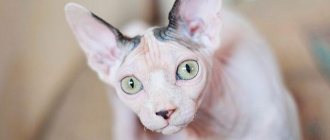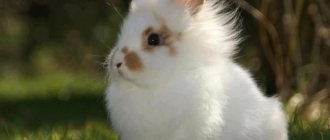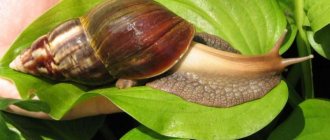Average life expectancy of Scottish cats
Scottish cats have a relatively strong immune system, due to which their life expectancy is higher than that of dogs, averaging 17 years. Under favorable conditions: balanced nutrition, regular care, care, good heredity, these animals live longer - over 25 years. Record-breaking cats have been recorded that managed to overcome the threshold of 33 years. Such cases are exceptions.
To achieve such longevity for a pet, you need to know the weaknesses, shortcomings of this breed, prohibited foods, as well as diseases that pose a danger to the life and health of the cat. There is an opinion that large representatives of Scottish cats with a good muscular corset live much longer than their counterparts who are physically underdeveloped. The heredity of an animal is of great importance.
Reference. To calculate the approximate lifespan of a cat, you need to refer to the pedigree. If his relatives died of natural causes at the age of 17-20 years, then the chances are high that the pet will live a long, healthy life.
To understand how long a kitten's life will be, monitor its behavior. Animals with good health lead an active lifestyle, they are active and inquisitive.
Initial examination by the breeder
Before purchasing a kitten, you need to carefully consider its physiological indicators. After all, most diseases in this breed appear with age and are not fatal, but can significantly spoil your joy from purchasing a kitten and affect the length of its stay with you.
Therefore, it is recommended to purchase representatives of this breed at the age of two to three months, when the kitten is already fully formed, eats independently and is strong enough to move to a new place of residence.
It is necessary to pay attention to the quality of the coat, the cleanliness of the tear ducts, as well as the behavior of the kitten, since many diseases, including bone diseases, may not appear immediately. However, their presence can affect the cat's behavior.
What affects the life expectancy of Scottish cats?
The main factor influencing the lifespan of straight-eared and fold-eared Scottish cats is genetics. The breed was bred by breeders. They gave her a charming appearance, but did not protect her from genetic diseases. Therefore, when buying a kitten, it is important to study the passport, information about diseases, and health problems of its parents.
In addition to genetic pathologies, Scots are characterized by diseases typical of other cats:
- skin (fungi, abscesses, abscesses, purulent rashes, allergic rash);
- infectious (candidiasis, anemia, rabies, salmonellosis);
- eye pathologies (clouded lens, tear tracks);
- heart problems;
- oncology.
Another negative factor is a fragile skeleton. Bone abnormalities are common in Scottish cats. Plus, fold-eared and straight-eared pets are predisposed to pathologies in the formation of cartilage tissue. In young cats, these diseases do not manifest themselves in any way and make themselves felt already in adulthood: the pet begins to limp, cannot walk or run normally. Insufficient physical activity leads to obesity and weakens the muscle corset. All these diseases can reduce life expectancy by 3-4 years.
Other content-related factors:
- Nutrition. Scottish cats, like other representatives of decorative breeds, are prone to obesity. The problem is caused by low mobility, lack of protein, vitamins, abundance of fats, carbohydrates in food. Against the background of obesity, straight-eared and fold-eared cats develop other diseases, for example, disorders of the liver, cardiovascular, and digestive systems.
- Grooming. Longhaired Scots require regular grooming. If the animal is not scratched, wool mats form, which often become a breeding ground for lice, ticks, and also a source of inflammation. In addition, Scottish cats, while licking their fur, swallow a huge amount of hair, which leads to the formation of lumps, seals in the stomach, and at the same time to blockage of the passages. This is fraught with problems in the gastrointestinal tract (constipation, lack of appetite, pain).
- Ear hygiene. Fold-eared Scots are predisposed to otitis media, which is why their life expectancy is shorter than that of straight-eared ones. Due to the special structure of the ears, dirt often gets into the sink, wax and pathogenic microbes accumulate. This leads to inflammation. To protect your pet from illness, you need to clean the ears with cotton swabs or pads 2-3 times a week.
How to accustom a kitten and an adult cat to a scratching post
How to choose cat litter
How to properly brush your cat's teeth
Otherwise, there are no problems in keeping straight-eared and fold-eared Scots. It is enough to surround your pet with care and attention (these cats do not tolerate loneliness).
How long do fold-eared cats live at home?
The average life expectancy of a Scottish cat, surrounded by the love and care of its owner, is significantly higher. Every stress, negative circumstances, difficult life situations in a pet’s life negatively affect the physiological, psychological, and moral state. Cats, like people, are susceptible to the harmful effects of the environment.
When walking on the street, an animal runs the risk of being harmed by passing cars, municipal equipment, weather conditions, or people. A pet that lives at home will live a long and healthy life.
We have a specimen of this breed living with us. Absolutely calm, noble cat. You can't force him to play. He sleeps a lot, eats a lot. Very patient. He treats children as an absolutely rational being, but allows himself to give a warning signal in the form of a growl. I trained myself to use the tray. It will not annoyingly rub against its legs and meow endlessly begging for food. An excellent breed for those families in which not all members love cats.
Fold cats are very affectionate. They become strongly attached to one family member, but remain friendly with other people. They don't like having their voices raised at them. They might be offended by this.
On May 10, my Burzhik died, he was 15 years old, he was a fold-eared red Scotsman, he was the kindest and smartest cat (((For the last year and a half he lived with my mother, I went abroad to earn money and came every three months to visit my relatives and my Burzhik, I bought him food until my next visit and really asked him to wait for me... But on this visit he didn’t wait for me for only a few days and flew off to the clouds. I didn’t see his last minutes of life, I didn’t know if he needed my help, but my mother says that he had breakfast, lay down on the sofa and that’s it... and left for another world... I cried so much... I was already blaming myself, maybe he was missing me, or maybe he was already 15 years old... Burzhik, my red sun, fly to rainbow, I will never forget you and you will forever remain in my memory as my bright, kind, beloved four-legged... This is my story
Alice (my mother-in-law) is very unfortunate, on the other hand, I’m glad that your cat lived such a long happy life, we also acquired such a miracle and would like to extend his life as long as possible, but we can’t decide on the food that you fed the kitty, may I know?
We recommend reading: Allergies in Cats Forms of Manifestation Photo
The article did not mention that this breed is at risk for heart problems. A huge number of deaths occur between the ages of 2 and 5 years.
We are seeing a cardiologist with a cat. The wall of the left ventricle is 1.5 at a norm of 0.6, high blood pressure. The fluffy has very heavy breathing. They say that he lived to be 8 years old. It’s a miracle. I’m not ready to let him go, we are struggling with hypertrophic cardiomyopathy against the background of cardiac and renal diseases. insufficiency. Beloved cat, please live











